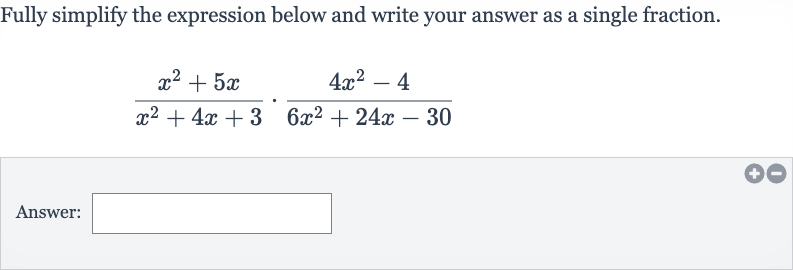AI tutor
Welcome to Bytelearn!
Let’s check out your problem:

Fully simplify the expression below and write your answer as a single fraction.Answer:
Full solution
Q. Fully simplify the expression below and write your answer as a single fraction.Answer:
- Factorize fractions: Factor the numerator and denominator of both fractions where possible.The first fraction is . We can factor the numerator by taking out the common factor , and the denominator can be factored as a sum of squares.The second fraction is . We can factor out the common factor in the numerator and factor the denominator.Now, notice that is a difference of squares and can be factored further.
- Factorize second fraction: Factor the denominator of the second fraction.We need to factor . To do this, we look for two numbers that multiply to () and add to . These numbers are and .So, the factored form of the denominator is:Now we can rewrite the second fraction as:
- Multiply fractions: Combine the two fractions by multiplying them. * To multiply fractions, we multiply the numerators together and the denominators together.
- Cancel common factors: Cancel out common factors.We can cancel out the term that appears in both a numerator and a denominator.
- Simplify expression: Simplify the expression.Now we multiply out the remaining terms.We can distribute the in the numerator:
- Multiply denominator terms: Simplify the expression further.We can now multiply the terms in the denominator:Simplify the terms in the denominator:
- Reduce common factors: Simplify the expression by reducing common factors.We can divide both the numerator and the denominator by :
- Check for further simplification: Check if the expression can be simplified further.The numerator and denominator do not have any common factors left, and the denominator cannot be factored in a way that would cancel out with the numerator. Therefore, the expression is fully simplified.
More problems from Multiplication with rational exponents
QuestionGet tutor help
QuestionGet tutor help
QuestionGet tutor help
QuestionGet tutor help
QuestionGet tutor help
